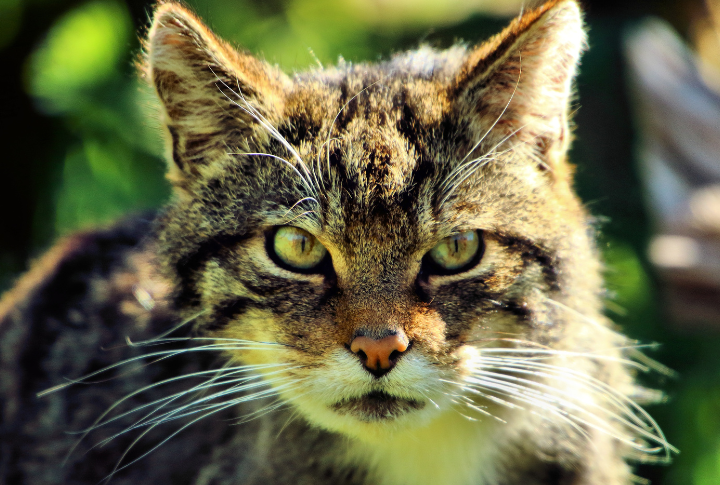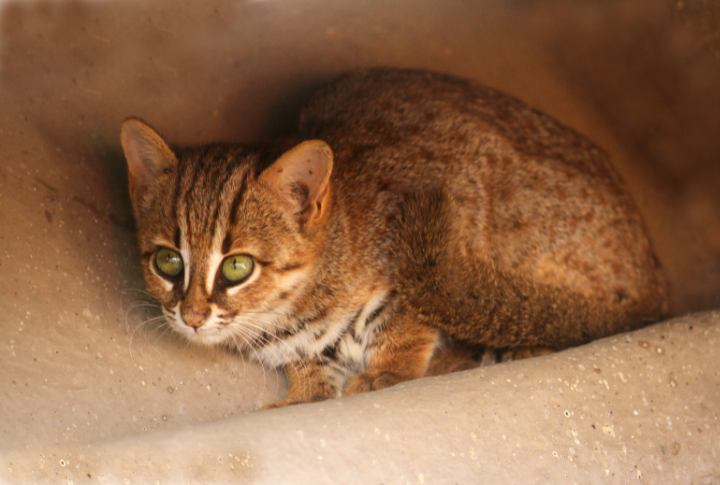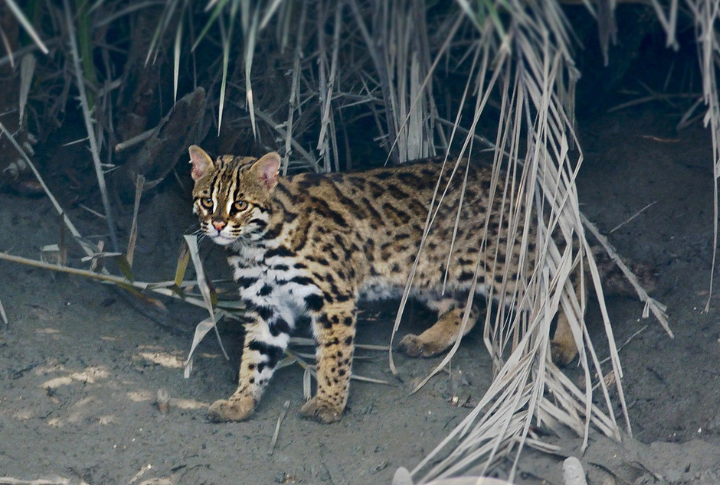
Wildcats are nature’s untamed creatures—fierce, elusive, and often impossible to spot in the wild. Some are apex predators ruling their territory, while others are so rare they might disappear before most people even know they exist. Here are the world’s most mind-blowing wildcats.
Amur Leopard

With fewer than 30 left in the wild at one point, conservationists were convinced the Amur Leopards would vanish. But against all odds, their numbers have crept past 100. Their thick, pale coats let them blend into the snowy forests of eastern Russia, where poaching and deforestation still threaten their future.
Iberian Lynx

Not long ago, the Iberian lynx was the most endangered feline on Earth, with fewer than 100 left. Spain and Portugal refused to let them die out and launched an intense recovery plan. Today, there are over 2,000 in the wild. Their signature black ear tufts and spotted coats make them look straight out of a fantasy novel.
Scottish Wildcat

The Scottish wildcat, nicknamed the “Highland Tiger,” is down to just a few dozen purebred individuals. While habitat loss and past persecution have contributed to their decline, the biggest threat today is hybridization with domestic cats. Years of interbreeding have nearly erased their DNA, leaving this fierce little predator fighting for survival.
Andean Mountain Cat

Spotting an Andean mountain cat in the wild is like winning the wildlife lottery—only a handful of people have ever seen one. Found in the rocky slopes of the Andes, these small, fluffy-tailed cats weigh about 12 pounds and are adapted to freezing temperatures. They’re so mysterious that conservationists rely on camera traps to confirm they’re still there.
Borneo Bay Cat

This rare feline faces an uncertain future, with fewer than 2,500 mature ones in the wild. Relentless deforestation is shrinking its habitat. The Borneo bay cat is so elusive that for over a century, it was known only from museum specimens. It’s about the size of a house cat and has striking reddish fur and a foxlike face.
Black-Footed Cat

Weighing just 2 to 5 pounds, the black-footed cat looks like an adorable kitten—but don’t be fooled. This tiny hunter has the highest kill rate of any cat species, with a 60% hunting success rate. It takes down birds, rodents, and even small mammals with deadly precision. Endemic to southern Africa, fewer than 10,000 individuals are believed to exist.
Fishing Cat

While most cats avoid water, the fishing cat thrives in it. Native to South and Southeast Asia, these sturdy, short-legged wildcats use their partially webbed feet to move through wetlands and skillfully scoop fish from the water. However, with wetland destruction rapidly shrinking their habitat, they are becoming one of the most vulnerable felines in the region.
Pallas’s Cat

If cats could win an award for best facial expressions, Pallas’s cat would take the crown. With its squashed face, thick coat, and perpetually grumpy expression, it looks like it’s judging everyone. Found in Central Asia, these cats survive in extreme cold and high altitudes, but habitat loss is pushing them toward endangerment.
Javan Leopard

Found only on the Indonesian island of Java, the Javan leopard is one of the last big cats fighting for survival in a country rapidly losing its wild spaces. With an estimated 188 to 571 mature ones left, they are endangered due to quick deforestation, including the expansion of palm oil plantations, which shrinks their habitat.
Rusty-Spotted Cat

This is the world’s smallest wildcat, and if you blink, you might miss it. The rusty-spotted cat weighs less than 4 pounds and is often mistaken for a kitten. Native to India and Sri Lanka, it’s an expert at avoiding human contact, though habitat destruction is catching up to it.
Sand Cat

Surviving in some of the harshest deserts on Earth, the sand cat can vanish like a mirage. Its thick fur protects it from extreme heat, and it doesn’t need to drink water—it gets all the hydration it needs from its prey. While not yet on the endangered list, habitat destruction is closing in fast.
Chinese Mountain Cat

China’s only endemic wildcat, the Chinese mountain cat, was basically a ghost until scientists finally captured a clear image of it in 2007. With its sandy coat and tufted ears, it blends perfectly into the Tibetan Plateau. It’s threatened by rodent poisoning campaigns that are wiping out its primary food source.
Margay

Native to the rainforests of Central and South America, the margay is an adept climber, spending much of its life in trees. Deforestation and the illegal pet trade have contributed to its declining numbers. Nonetheless, you’ll know one by its large eyes and flexible ankles, which aid in its nocturnal hunting habit.
Kodkod

The kodkod, South America’s tiniest yet fiercest wildcat, prowls the dense temperate rainforests of Chile. Also known as the guina, this elusive feline weighs just 4 to 5 pounds and sports a striking spotted coat. Sadly, deforestation and agriculture are ruining its habitat, leaving this vulnerable species fighting for survival.
Serval

With ears like satellite dishes and legs that seem almost too long for its body, the serval is built for hunting in tall grass. It can leap nearly 10 feet to snatch birds mid-flight. While not as endangered as some other wild cats, habitat loss and the exotic pet trade continue to threaten its populations.
Caracal

With its sleek body and long, tufted ears, the caracal looks like a feline supermodel. But this cat isn’t just about looks—it’s one of the most agile hunters in the wild, capable of taking down prey larger than itself. Despite its adaptability, habitat destruction is closing in.
Clouded Leopard

Neither a true big cat nor a small one, the clouded leopard is a unique species inhabiting the forests of Southeast Asia. Known for its elongated fangs and cloud-like markings, it remains one of the least understood wildcats. With fewer than 10,000 individuals left, deforestation is its greatest threat.
Ocelot

The ocelot, with its sleek golden coat patterned in dark rosettes, roams the forests and grasslands of South and Central America. Deforestation and agriculture remain a significant threat. Once heavily hunted for its fur, populations have rebounded in some areas, thanks to legal protections.
Geoffroy’s Cat

A Geoffroy’s cat has a distinctive black-spotted coat that provides excellent camouflage. Though small compared to big cats, Geoffroy’s cat is a tough and adaptable hunter, thriving in the grasslands, woodlands, and scrublands of Argentina, Brazil, Paraguay, Bolivia, Uruguay, and Chile. Despite its resilience, poaching and habitat destruction are threatening this elusive species.
Tsushima Leopard Cat

The Tsushima leopard cat, living only on Japan’s Tsushima Islands, is one of the most endangered wildcats on the planet. Habitat loss and road accidents pose the greatest threats to its survival, such that fewer than 100 individuals remain. Still, efforts to protect this species are ongoing.

